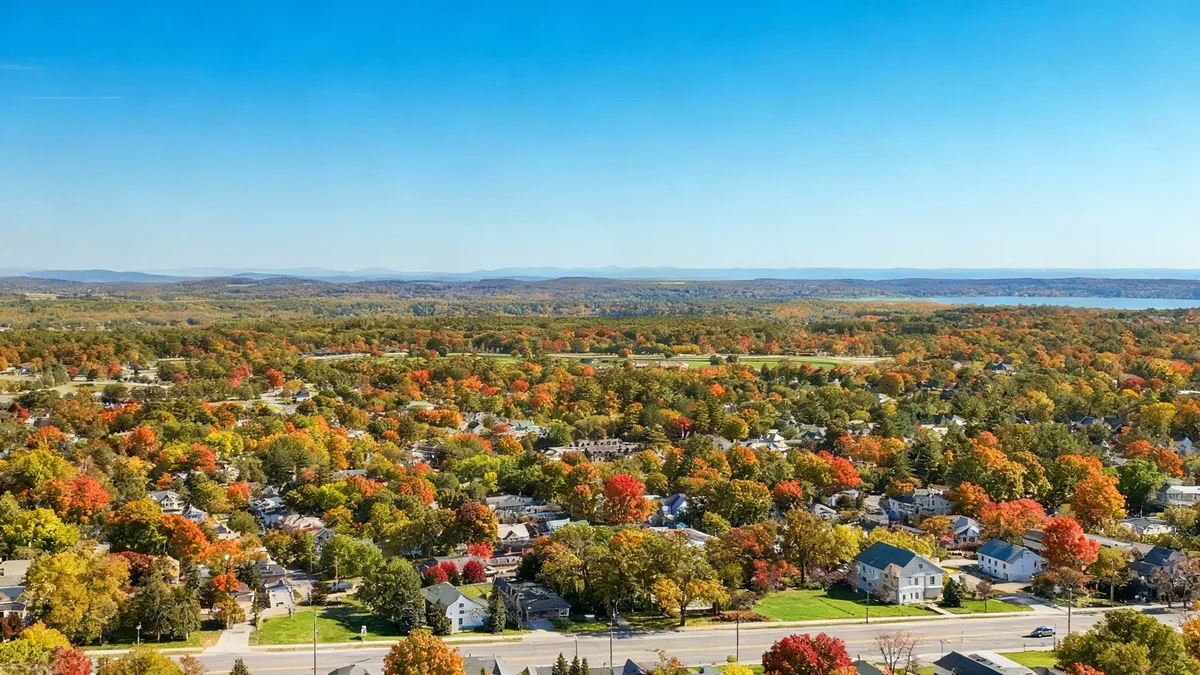In Fall River, Massachusetts, a city grappling with a significant housing shortage, developers are increasingly using a financial tool known as Tax Increment Exemptions (TIEs) to make large-scale residential projects viable. This strategy is central to the city's effort to increase its market-rate housing, which currently makes up only 30% of the total housing stock.
While these tax incentives are credited with enabling the construction of new apartments and the renovation of historic buildings, they have also sparked a debate about their impact on municipal revenue. Proponents argue they are essential for attracting investment, while critics question the long-term financial trade-offs for the city.
Key Takeaways
- Fall River uses Tax Increment Exemptions (TIEs) to encourage the development of market-rate housing.
- Currently, only 30% of the city's housing is classified as market-rate, highlighting a significant supply gap.
- TIEs provide temporary tax relief on the increased property value resulting from development, not on the original value.
- These incentives are often combined with state programs like the Housing Development Incentive Program (HDIP) and historic tax credits to make projects financially feasible.
- Eight major projects in Fall River have utilized these combined incentives, representing a $15 million investment through the HDIP program alone.
Understanding Tax Increment Exemptions
The use of TIEs is a key component of Fall River's strategy to stimulate its housing market. However, the mechanism is often misunderstood. It is not a complete tax waiver but rather a structured, temporary reduction in taxes on the new value created by a development project.
According to Ken Fiola, executive vice president of Bristol County Economic Development Consultants, these incentives are critical. Without them, he suggests, significant development in Fall River would be unlikely to occur. Developer Tony Cordeiro, who has utilized TIEs, stated they have helped him “take the darkness out of downtown” and revitalize historic properties.
How the TIE Program Works
A TIE in Fall River is typically structured over a 10-year period. The tax relief applies only to the increase in property value after a developer completes construction or rehabilitation. The original value of the property continues to be taxed at its full rate throughout the process.
The 10-year schedule is divided into two phases:
- Years 1-5: The developer is exempt from paying 80% of the taxes on the increased value of the property. They are still responsible for 100% of the tax on the original value plus 20% of the tax on the new value.
- Years 6-10: The exemption decreases. The developer pays taxes on 80% of the increased value, receiving a 20% exemption.
After the 10-year period concludes, the developer is required to pay 100% of the property taxes on the property's full, reassessed value. Fiola emphasizes that this structure ensures the city gains revenue it would not have otherwise seen.
“The city’s not losing anything. They’re gaining,” Fiola explained, highlighting that the properties being developed are often underutilized or blighted, generating minimal tax revenue before redevelopment.
A Powerful Combination of Incentives
TIEs are rarely used in isolation. Their effectiveness is magnified when combined with other state-level programs designed to spur development in so-called Gateway Cities like Fall River. The most significant of these is the Housing Development Incentive Program (HDIP).
What is the HDIP?
The Housing Development Incentive Program is a Massachusetts state initiative aimed at increasing market-rate housing in designated Gateway Cities. The program provides developers with state tax credits, which helps to offset the high costs and financial risks associated with building in these areas. The underlying goal is that creating higher-end housing can help revitalize neighborhoods, attract new residents, and stimulate local economic growth.
Fiola noted that eligibility for HDIP tax credits is contingent on a local tax exemption, like a TIE, being in place. This link makes the two programs a powerful combination for developers, who can sell the state tax credits to generate upfront capital for their projects.
In addition to HDIP, many projects in Fall River, particularly those involving the renovation of old mills and historic downtown buildings, also qualify for historic tax credits. The Massachusetts Historical Commission offers a state tax credit of up to 20% for certified rehabilitation projects on income-producing properties listed on the National Register of Historic Places.
Major Projects Fueled by Incentives
The combination of TIEs, HDIP credits, and historic tax credits has enabled numerous significant development projects across Fall River. Eight key projects alone account for a $15 million investment in the city through the HDIP program. The statewide cap for HDIP credits is $10 million annually, making Fall River a significant recipient of this state aid.
HDIP Investment in Fall River Projects
- Lofts at Bedford Street: $2.5 million
- Sacred Heart Lofts: $2.5 million
- Union Belt Lofts: $2.5 million
- Creative Class: $2.0 million
- Commonwealth Landing: $1.9 million
- Adams House: $1.5 million
- Residences at River’s Edge: $1.5 million
- Downtown Lofts: $750,000
Six of these eight projects—all except Residences at River’s Edge and Lofts at Bedford Street—also received historic tax credits, further reducing the financial burden on developers and making the adaptive reuse of these landmark buildings possible.
The Broader Economic Impact
Proponents of these tax incentive programs argue that their benefits extend far beyond the direct financial calculations. By encouraging development, the city addresses its critical housing shortage while also creating jobs for construction workers and tradespeople.
To further direct this growth, Fall River has established four specific tax increment financing (TIF) zones. These designated areas cover the central business district, the Flint business district, multi-story mills, the waterfront, and other key commercial and industrial areas. City bylaws ensure that TIE agreements within these zones cannot exceed a 20-year term.
As development costs continue to climb, the rents for these new market-rate units reflect current market conditions. However, Fiola and other supporters maintain that the long-term benefits are substantial. Each renovated mill or repurposed office building brings new residents to the city, who in turn spend money at local businesses, contributing to a more vibrant and economically stable community.
While the debate over the use of tax incentives continues, their role in reshaping Fall River's housing landscape is undeniable. For now, they remain a central tool in the city's ongoing effort to foster growth and revitalization.





